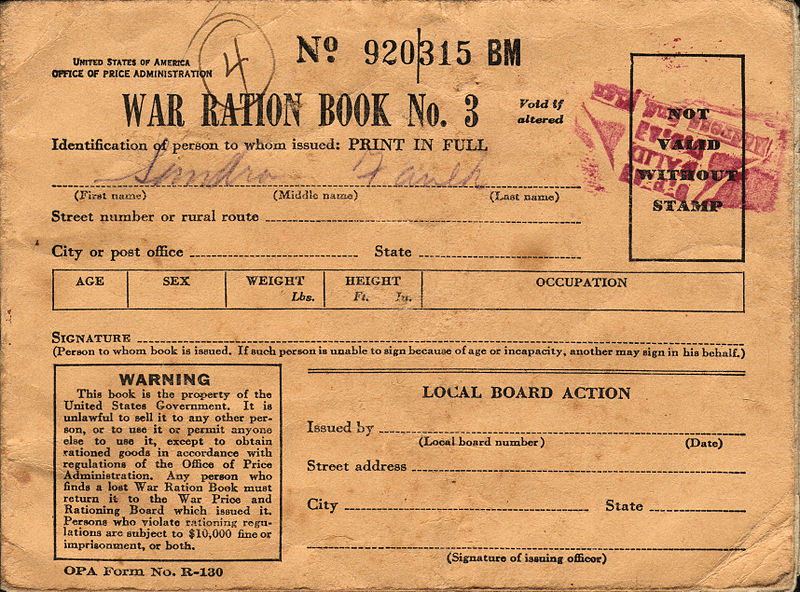Summary | Excerpt | Reading Guide | Reviews | Beyond the Book | Read-Alikes | Genres & Themes | Author Bio

A Novel of Elsa Schiaparelli and Coco Chanel
by Jeanne MackinThis article relates to The Last Collection

Jeanne Mackin's novel, The Last Collection, brings to life the vibrant fashion scene in Paris on the eve of World War II. Once set in motion the war had a profound influence on women's clothing across the globe. Parisian fashion was not especially affected, as the novel makes clear, but changes would reach far beyond the French capital. In Britain and the United States, two of France's most prominent allies, the war also would dramatically alter women's fashion.
In both countries, the raw materials used to manufacture many everyday goods were dedicated to the war effort; wool, for example, was needed for uniforms and blankets, and was therefore in short supply to the general population. In 1941 Britain instituted clothing rations to keep demand at a reasonable level, thereby freeing up more material and workers to supply the military's needs. Each person was allocated a coupon book worth a set number of points, and each clothing item was given a points value based on the labor that was required to produce it (a new dress required eleven points, for example, while a man's shirt was just eight). When someone went to purchase clothes, they'd provide not only the money needed to buy the item but the requisite coupons equal to the point value. At the start of the war each person was given 66 points per year but as supplies dwindled, so did the points allocations; by the end of the war the annual allowance was just 24 points.
Britain's Board of Trade designed ready-to-wear clothing called the Utility line. These items were fashioned from a limited range of quality-controlled fabrics that were deemed to be less scarce. The end result was that people could pay less for a more durable product, and by 1945 85 percent of clothing produced in Britain was under the Utility brand. Concerned about the potential of creating clothes that all looked the same, the Board of Trade contracted with the newly-formed Incorporated Society of London Fashion Designers to create stylish yet inexpensive outfits using Utility materials. The new styles for women focused on simple lines with minimal trimmings. There were strict guidelines as well:
British women were called to "Make Do and Mend" over the course of the war and for years afterwards, but they found ways to be fashionable in spite of wartime rationing. One of the iconic styles of 1940s Britain was the one-piece "Siren Suit," a jumpsuit that could be quickly zipped on over one's pajamas or nightgown. The mass-produced jumpsuit was originally designed for use in and on the way to air-raid shelters, but over time tailored and homemade versions of them became quite chic. Women in Britain were also expected to "keep up appearances"; there was real anxiety within the British government that showing a lack of concern over personal appearance was an indication of poor morale; because of this, cosmetics were never rationed.
Across the ocean, the United States also implemented a clothing rationing of sorts for the same reasons, but placed the burden on the manufacturers instead of the consumer. It issued a complex, detailed set of rules (called "L-85"), with heavy fines and/or jail time for lack of compliance. Specifications existed for each article of clothing.
The restrictions in place in both countries gave rise to a number of fashion innovations. Hemlines went up significantly during the era, raising from mid-calf to knee level, and pants/trousers (which some women wore to work in the factories) became more acceptable daily wear. Girdles became a thing of the past, since the rubber used for stays was needed elsewhere; women instead relied on dresses and skirts with adjustable waistbands. In women's footwear, the wedge style came into popularity with its wood or cork sole and fabric or hemp upper. Elaborate hats, to which no rationing applied, also became prevalent as one of the few ways women could express their individuality during the war years.
by Kim Kovacs
Filed under People, Eras & Events
![]() This "beyond the book article" relates to The Last Collection. It originally ran in July 2019 and has been updated for the
August 2020 paperback edition.
Go to magazine.
This "beyond the book article" relates to The Last Collection. It originally ran in July 2019 and has been updated for the
August 2020 paperback edition.
Go to magazine.
Your guide toexceptional books
BookBrowse seeks out and recommends the best in contemporary fiction and nonfiction—books that not only engage and entertain but also deepen our understanding of ourselves and the world around us.